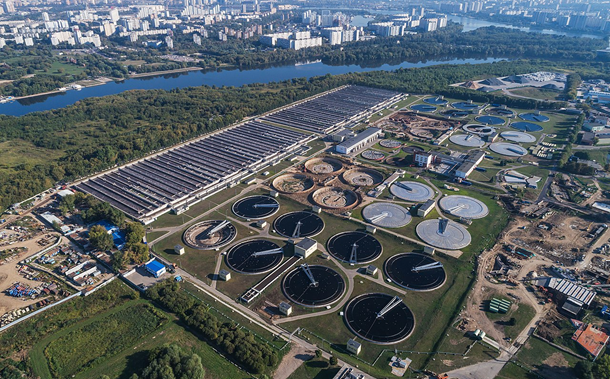Performance Evaluation of Composite CNT/PE-Modified Asphalt Concrete at Binder, Mixture, and Pavement Levels
Downloads
Advancing the multi-scale performance of asphalt pavements requires innovative binder modifications that address limitations in rutting resistance, fatigue resistance, and durability across the binder, mixture, and structural levels. This study evaluates the performance of asphalt cement, mixtures, and pavement systems modified with a combination of polyethylene (PE) and carbon nanotubes (CNTs). The binder was modified using 4% PE and varying CNT contents (0.5%, 1%, 1.5%, and 2% by weight of the modified binder). Binder performance was assessed through conventional and rheological tests, including penetration, softening point, viscosity, performance grade (PG) evaluation, and master curve analysis. Mixture-level performance was evaluated using Marshall properties, rutting, resilient modulus, and fatigue tests. Long-term pavement behavior was predicted using VESYS 5W software. The results showed that incorporating 1.0% CNT with 4.0% PE significantly improved binder rheology, increasing the true failure temperature by approximately 10% compared to the reference binder. Complex modulus and phase angle master curves also indicated notable improvements at low frequencies. Mixtures containing 2% CNT demonstrated approximately one-third of the permanent strain observed in the reference mix, while PCNT1.0% exhibited the best fatigue resistance. These findings highlight the significant role of combining plastomeric modifiers (PE) with nanoscale materials (CNTs) in enhancing the performance of asphalt binders and mixtures.
Downloads
[1] Elwardany, M. D., Planche, J. P., & King, G. (2022). Proposed Changes to Asphalt Binder Specifications to Address Binder Quality-Related Thermally Induced Surface Damage. Transportation Research Record, 2676(5), 176–191. doi:10.1177/03611981211065428.
[2] Yang, K., Cui, H., Ma, X., & Zhu, M. (2023). Understanding and characterizing the fatigue cracking resistance of asphalt binder at intermediate temperature: A literature review. Construction and Building Materials, 407, 133432. doi:10.1016/j.conbuildmat.2023.133432.
[3] Albayati, A. H., Mustafa, F. S., Al-ani, A. F., Sukhija, M., Moudhafar, M. M., & Maher, A. M. (2025). Advancing asphalt binder performance through nanomaterial and polymer modification: Experimental and statistical insights. Results in Engineering, 25, 104458. doi:10.1016/j.rineng.2025.104458.
[4] Yang, Q., Lin, J., Wang, X., Wang, D., Xie, N., & Shi, X. (2024). A review of polymer-modified asphalt binder: Modification mechanisms and mechanical properties. Cleaner Materials, 12, 100255. doi:10.1016/j.clema.2024.100255.
[5] Emtiaz, M., Imtiyaz, M. N., Majumder, M., Idris, I. I., Mazumder, R., & Rahaman, M. M. (2023). A Comprehensive Literature Review on Polymer-Modified Asphalt Binder. CivilEng, 4(3), 901–932. doi:10.3390/civileng4030049.
[6] Yin, F., West, R., Powell, B., & DuBois, C. J. (2025). Short-Term Performance Characterization and Fatigue Damage Prediction of Asphalt Mixtures Containing Polymer-Modified Binders and Recycled Plastics. Transportation Research Record, 2679(1), 742–759. doi:10.1177/03611981221143119.
[7] Jexembayeva, A., Konkanov, M., Aruova, L., Kirgizbayev, A., & Zhaksylykova, L. (2024). Performance Optimization Approach of Polymer-Modified Asphalt Mixtures with PET and PE Waste. Polymers, 16(23), 3308. doi:10.3390/polym16233308.
[8] Li, M., Luo, C., Zhu, L., Cong, P., Li, H., Chen, X., Zhang, Y., Chao, M., & Yan, L. (2023). Polyethylene based on molecular weight design for eco-friendly asphalt. Journal of Applied Polymer Science, 140(26), 53994. doi:10.1002/app.53994.
[9] Ma, J., Sandrasagra, J., Oriotis, N., & Hesp, S. A. M. (2024). Evaluating the phase compatibility of asphalt binders using modulated differential scanning calorimetry. Bituminous Mixtures and Pavements VIII, 47–54, Boca Raton, United States. doi:10.1201/9781003402541-6.
[10] Tang, J., & Wang, H. (2023). Compatibility and Self-Healing Properties of Asphalt Binder with Polyethylene Plastics: Observations from Coarse-Grained Molecular Simulation. Journal of Materials in Civil Engineering, 35(11), 4023412. doi:10.1061/jmcee7.mteng-16148.
[11] Aljbouri, H. J., & Albayati, A. H. (2023). Effect of nanomaterials on the durability of hot mix asphalt. Transportation Engineering, 11, 100165. doi:10.1016/j.treng.2023.100165.
[12] Afshin, A., & Behnood, A. (2025). Nanomaterials in asphalt pavements: A state-of-the-art review. Cleaner Waste Systems, 10, 100214. doi:10.1016/j.clwas.2025.100214.
[13] Eisa, M. S., Mohamady, A., Basiouny, M. E., Abdulhamid, A., & Kim, J. R. (2022). Mechanical properties of asphalt concrete modified with carbon nanotubes (CNTs). Case Studies in Construction Materials, 16, 930. doi:10.1016/j.cscm.2022.e00930.
[14] He, Z., Ou, J., Xie, T., Yang, F., & Li, Y. (2024). Evaluation of different functionalized multi-walled carbon nanotubes (MWCNTs) modified asphalts. Archives of Civil Engineering, 70(4), 307–322. doi:10.24425/ace.2024.151894.
[15] Sun, P., Zhang, K., Xiao, Y., & Liang, Z. (2022). Analysis of Pavement Performance for Nano-CaCO3/SBS Modified Asphalt Mixture. Journal of Physics: Conference Series, 012031. doi:10.1088/1742-6596/2329/1/012031.
[16] Liz, J. V. de, Barra, B. S., Mikowski, A., Hughes, G., & Pérez, Y. A. G. (2024). Trends in the incorporation of nanomaterials in asphalt binders to improve rheological properties. Caderno Pedagógico, 21(9), e8183. doi:10.54033/cadpedv21n9-256.
[17] Lu, Y., Li, S., Jiang, Y., Yang, X., & Li, L. (2024). Rheological and Aging Properties of Nano-Clay/SBS Composite-Modified Asphalt. Materials, 17(17), 4376. doi:10.3390/ma17174376.
[18] Salam, K., Mir, M. S., & Mohanty, B. (2024). Rheological Investigation of Nano Silica-SBS Modified Soft Grade Bitumen. Transportation Research. TPMDC 2022. Lecture Notes in Civil Engineering, 434, Springer, Singapore. doi:10.1007/978-981-99-6090-3_13.
[19] Liu, B., Li, X., & Li, S. (2024). Pavement performance analysis of carbon nanotube/SBS composite modified asphalt. Carbon Letters, 34(1), 343-350. doi:10.1007/s42823-023-00605-0.
[20] Huang, H., Wang, Y., Wu, X., Zhang, J., & Huang, X. (2024). Nanomaterials for Modified Asphalt and Their Effects on Viscosity Characteristics: A Comprehensive Review. Nanomaterials, 14(18), 1503. doi:10.3390/nano14181503.
[21] Xin, X., Yao, Z., Shi, J., Liang, M., Jiang, H., Zhang, J., Zhang, X., & Yao, K. (2020). Rheological properties, microstructure and aging resistance of asphalt modified with CNTs/PE composites. Construction and Building Materials, 262, 120100. doi:10.1016/j.conbuildmat.2020.120100.
[22] Li, J., & Tang, F. (2023). Effects of two metal nanoparticles on performance properties of asphalt binder and stone matrix asphalt mixtures containing waste high density polyethelene. Construction and Building Materials, 401, 132787. doi:10.1016/j.conbuildmat.2023.132787.
[23] Liang, M., Su, L., Li, P., Shi, J., Yao, Z., Zhang, J., Jiang, H., & Luo, W. (2020). Investigating the rheological properties of carbon nanotubes/polymer composites modified asphalt. Materials, 13(18), 4077. doi:10.3390/ma13184077.
- Authors retain all copyrights. It is noticeable that authors will not be forced to sign any copyright transfer agreements.
- This work (including HTML and PDF Files) is licensed under a Creative Commons Attribution 4.0 International License.![]()














